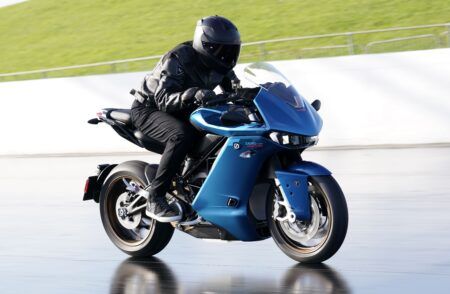Hyundai unveils its FCEV Initium concept, showcasing the brand’s new design language and its desire to be at the forefront of a hydrogen-powered future
If there’s one identifying trait of Hyundai’s EVs, it’s their futuristic look: at the time of writing the marque is teasing the Ioniq 9, which looks even more sleek and refined than previous iterations. However, the company claim that its new hydrogen fuel cell electric vehicle (FCEV) concept – called Initium and unveiled at its Clearly Committed event in Goyang, South Korea last month – is the real future of transportation.
Hyondai’s vision of a sustainable hydrogen-powered society shouldn’t come as a surprise, as the company has more than a quarter century of commitment to the technology. Initium, which means ‘beginning’ or ‘first’ in Latin, represents Hyundai’s latest innovation as a pioneer in hydrogen technology development.
“Hyundai Motor’s clear, unwavering commitment to hydrogen over the past 27 years is rooted in our belief in its potential as a clean, accessible and therefore fair energy source for everyone,” said Jaehoon Chang, Hyundai’s President and CEO. “We are dedicated to pioneering a future where hydrogen is used by everyone, in everything, and everywhere.”
The concept vehicle offers a preview of a new FCEV production model Hyundai plans to launch in the first half of 2025. The design reflects Hyundai’s new ‘Art of Steel’ design language, which the company says embodies the character of HTWO – Hyundai’s dedicated hydrogen business brand. HTWO was launched earlier this year to oversee the company’s efforts across the hydrogen value chain, spanning production, storage, transportation and utilization. The vision for HTWO Grid is another example of the marque’s commitment to actively participate in the development of a hydrogen society. “The shift to hydrogen energy is for future generations,” said Executive Chair Euisun Chung.
 Design and performance
Design and performance
Initium’s design integrates Hyundai’s HTWO branding, with a distinct ‘+’ inspired graphic element used in the lighting signature that blends into the bumper. The overall aesthetic aims for a rugged yet sophisticated SUV-like appearance, with bold lines, solid volumes, and a refined elegance.
“Our challenge began from the manufacturing stage, where we pushed the formability of steel to the extreme to create a form of art,” said SangYup Lee, Executive Vice President and Head of Hyundai and Genesis Global Design. “With Initium, we’ve crafted a more SUV-like design that is both solid and safe, reflecting our dedication to our customers through customer-centric design.”
According to Hyundai, the vehicle’s development focused on three key areas: driving range and performance, interior space and versatility, and unique hydrogen-specific features.
For range and performance, Initium uses large hydrogen fuel tanks to maximize its driving distance, targeting over 650 km between refueling. Aerodynamic wheels and low rolling resistance tires also contribute to efficiency. The fuel cell powertrain has been enhanced to deliver up to 150 kW of electric motor output, enabling smooth acceleration and overtaking.
Inside, the concept car offers a spacious, family-friendly cabin with a large living space in the second row, including reclining seatbacks for increased comfort. The wide body and large rear door openings also enhance entry and exit for rear passengers.
Easing FCEV adoption
There are many challenges faced by owners of FCEVs, not least the availability of the fuel itself. To help overcome some of these challenges Hyundai have included several innovative features in Initium tailored specifically for hydrogen vehicles. This includes a route planner that can identify available hydrogen fueling stations along a driver’s route, displaying information such as station accessibility, availability, and waiting times.
Another unique feature is Initium’s ability to function as a power source. The vehicle’s fuel cell can provide electricity to charge household appliances and personal devices via the onboard Vehicle-to-Load (V2L) system, transforming it into a potential backup power supply.
Occupant safety is also paramount, and Initium incorporates a reinforced multi-skeleton structure, side body structure, and nine airbags, offering top-tier collision safety performance globally.
 Hyundai’s Hydrogen Commitment
Hyundai’s Hydrogen Commitment
The unveiling of Initium comes as part of Hyundai’s broader push to establish itself as a leader in hydrogen mobility. The company has been developing hydrogen fuel cell technology for over 27 years, dating back to the early 2000s. In 2005, it established its Mabuk Environmental Technology R&D Center to accelerate FCEV development. At the time, Hyundai Group Honorary Chairman Mong-Koo Chung encouraged researchers to pursue ambitious engineering challenges without worrying about budgets.
“You can never make something great by creating it just once,” Chung said. “Don’t worry about budget, let young engineers try making every type of car they dream of. There’s no need to save money by developing the same car 100 times over. It’s fine if all 100 models are completely different to each other.”
This long-term commitment paid off, as Hyundai became the world’s first automaker to mass-produce FCEVs, introducing its first dedicated hydrogen model in 2018. The Initium concept builds upon these prior successes, further showcasing Hyundai’s expertise.
Looking forward
By the time you read this Hyundai will have showcased the Initium concept at the Los Angeles Auto Show and Auto Guangzhou, and the production version is scheduled to launch in the first half of 2025, providing consumers with a new option in the growing hydrogen vehicle market. With its focus on range, performance, practicality, and addressing key FCEV adoption barriers, the Initium concept reasserts Hyundai’s vision for the future of sustainable transportation powered by hydrogen, and its unwavering commitment to it.
In the words of Jaehoon Chang, “We invite you to join us on this journey.” One that will be – Hyundai hope – a hydrogen-powered one.





